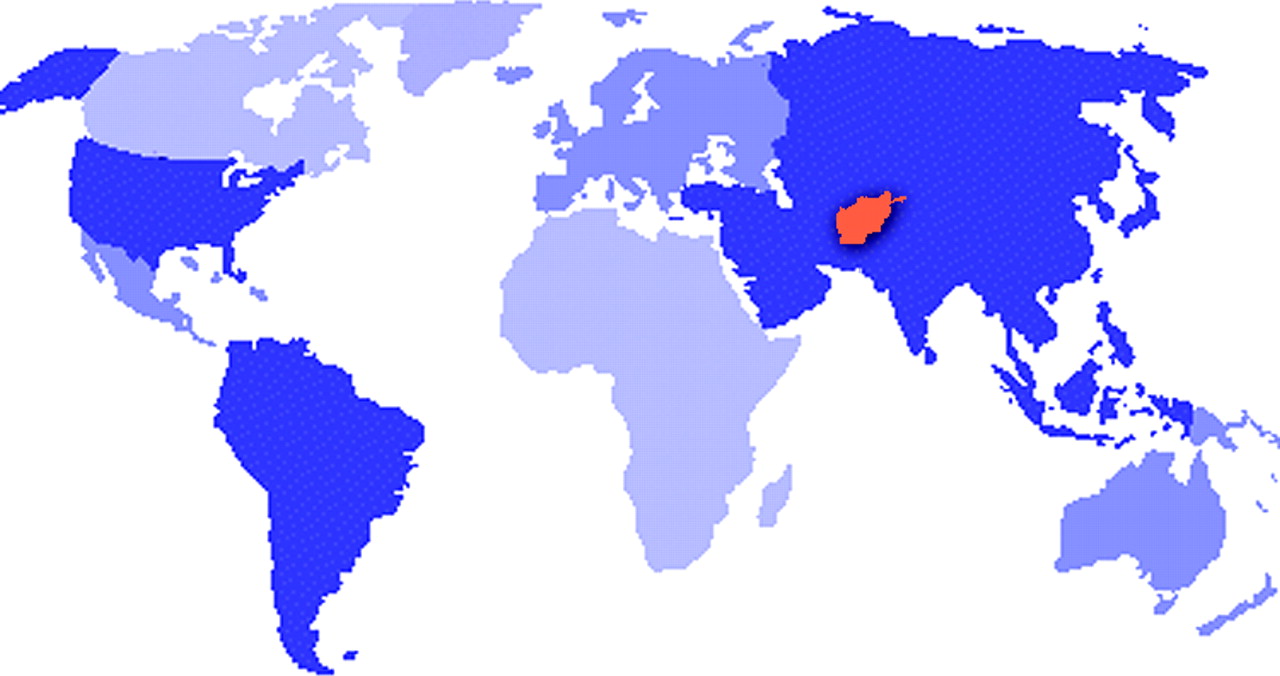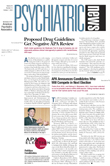The majority of Afghanistan residents have endured multiple traumatic events, and many experience symptoms of depression, anxiety, and posttraumatic stress disorder (PTSD), but few receive treatment due to a shortage of mental health resources, according to a new study.
According to findings from a nationally representative survey of 799 Afghanistan residents aged 15 and older, 407 people experienced at least four traumatic events during the past decade.
Primary investigator Barbara Lopes Cardozo, M.D., M.P.H., a psychiatrist with the International Emergency and Refugee Health Branch at the Centers for Disease Control and Prevention (CDC), also looked at whether respondents were disabled, defined as “any restriction or lack (resulting from impairment) of ability to perform an activity in the manner or within the range considered normal for a human being.”
She found that of the 100 respondents (12.5 percent) who were disabled, 71.7 percent reported symptoms of depression, 84.6 percent anxiety, and 42.2 percent PTSD. For the 699 nondisabled respondents, 67.7 percent reported symptoms of depression, 72.2 percent symptoms of anxiety, and 42.1 percent symptoms of PTSD.
The findings appeared in the August 4 Journal of the American Medical Association, which was dedicated to the theme of violence and human rights.
Afghanistan Faces Decades of War
To place the findings in context, the article explained that “the invasion and subsequent occupation of Afghanistan by Soviet forces exposed Afghans to bombardment, executions, and the mass placement of landmines. This conflict generated an estimated 6 million refugees and caused an estimated 1 million deaths.”
In addition, the article noted that the emergence of the Taliban in 1994 resulted in “extreme restrictions” on Afghanistan residents, especially women, “who were prohibited from working outside their homes unless accompanied by a close male relative.”
In addition, mental health facilities throughout Afghanistan are“ nonexistent or in poor condition,” according to the article.
It is in this environment that Lopes Cardozo sought to determine the demographics, social functioning, mental health problems, and coping mechanisms of Afghanistan residents to provide recommendations about building mental health resources in the country.
The CDC, the United Nations Children's Emergency Fund, and the Ministry of Health in Afghanistan, among other governmental and nongovernmental organizations, joined forces to conduct the survey.
Using random selection procedures, the researchers chose one village from each of 50 representative districts in the country and 735 households from 49 villages.
From a list of members in each household, a survey team conducted a mental health survey among one randomly selected nondisabled person aged 15 or older as well as a disabled person, if there was one in the household.
The survey took place from July to September 2002.
The questionnaire included questions from three instruments: the Medical Outcomes Study 36-Item Short-Form Health Survey, which measured social functioning; the Hopkins Symptom Checklist-25, a screening tool used to detect symptoms of anxiety and depression; and the Harvard Trauma Questionnaire, which measures traumatic events and PTSD symptoms.
Multiple Traumas Experienced
When asked about trauma, nondisabled survey respondents most frequently reported a lack of food and water (56.1 percent), having poor health with no access to medical care (54.9 percent), the need to flee suddenly (44 percent), and lack of shelter (44 percent).
Among disabled respondents, the most commonly reported form of trauma was lack of shelter (69.7 percent), followed by ill health without access to medical care (67.3 percent) and bombardments by coalition forces (62.6 percent).
Other traumatic events experienced by both disabled and nondisabled respondents included forced separation from family members, torture, and interrogation or harassment by the Taliban.
Lopes Cardozo found that while symptoms of anxiety were higher among disabled respondents than nondisabled respondents, the prevalence of depression and PTSD symptoms were about the same for both groups.
Among disabled respondents, women had higher prevalence rates for symptoms of depression (83 versus 52 percent for men), anxiety (82.6 versus 71.6 percent), and PTSD (55.3 percent versus 25.7 percent).
This finding “is not surprising, given the restrictions placed on women, especially during the Taliban regime,” many of which remained in place after the fall of the regime, the authors pointed out.
Mental Health Services Lacking
Common mental health coping techniques reported by respondents included reading the Koran or praying and talking to family or friends, both of which served as protective factors against anxiety symptoms in nondisabled respondents.
The high prevalence of mental health problems and number of traumatic experiences shared by people living in Afghanistan point to the need for additional mental health facilities that are accessible to residents, Lopes Cardozo told Psychiatric News. In addition, “there is a shortage of psychiatrists and trained mental health professionals in all of the country,” she said.
While it would be difficult to reverse the restrictions placed on women living in Afghanistan overnight, she acknowledged, “more mental health resources should be focused specifically on the needs of women.”
The study was funded by the Centers for Disease Control and Prevention.
JAMA 2004 292 575

